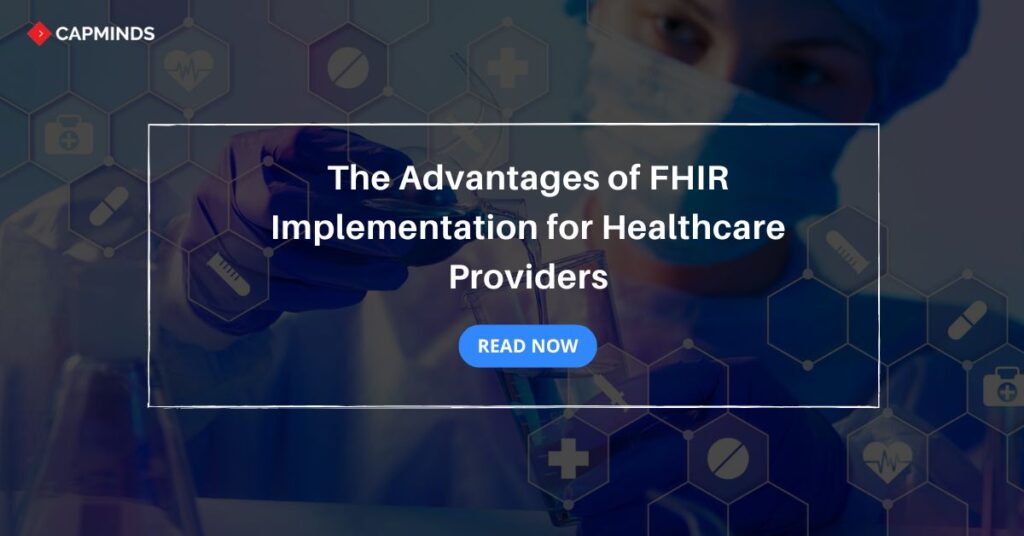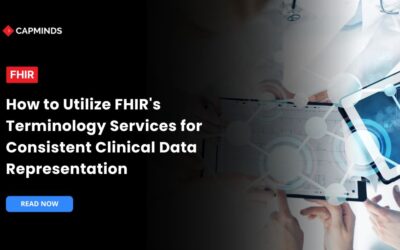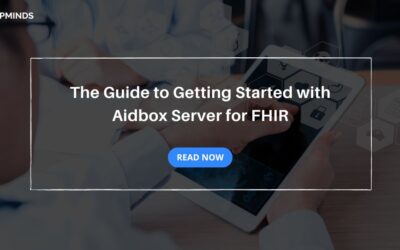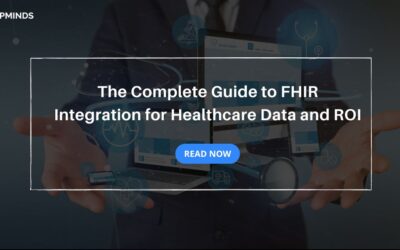The Advantages of FHIR Implementation for Healthcare Providers
FHIR, which stands for Fast Healthcare Interoperability Resources, is an emerging standard to ease the electronic exchange of healthcare data. HL7 FHIR was founded with the best qualities of the earlier accepted standards-HL7 v2, HL7 v3, and CDA- to kill the major shortcomings they carried with them.
Overall, FHIR provides a foundation for smooth data exchange between several healthcare systems and greater cooperation between providers, administrators, and developers.
FHIR is modernizing healthcare interoperability, using web technologies and a resource-based approach. The current scenario makes access to data fairly easy, fast, and cheaper. This blog post will look at the evolution of FHIR and its significant advantages to the healthcare industry.
Fast Healthcare Interoperability Resource (FHIR)
FHIR is a standard for the exchange of electronic healthcare information that harmonizes the best from HL7 v2, HL7 v3, and CDA but also comprises several significant improvements upon previous standards.
Additionally, FHIR guarantees that health information is securely accessible to those who require it.
The organization Health Level Seven created this standard in 2012. The market’s requirement for health information exchange contributed to its quick expansion.
FHIR has several benefits:
- Implementation was stated to be quick and simple.
- Use is unrestricted.
- Assistance from leading EHR providers.
- Lots of free materials and tools.
- Unconventional adaptability and interoperability.
- A solid basis in web standards.
Employing a contemporary, web-based strategy to improve health interoperability, streamlines data transfer between systems. Furthermore, it guarantees the smooth transfer and utilization of health data across various platforms and organizations.
Related: The Beginners Guide to Getting Started with FHIR on OpenEMR
The Need for FHIR: Why Was It Developed?
The main aim of FHIR is to normalize and ease the exchange of healthcare data between healthcare administrators, providers, and professionals to share patient data in an easy and stress-free way, even when the providers are using different software systems.
Key Benefits of FHIR for Healthcare Providers
1. Easy Integration and Implementation
- FHIR makes data easily accessible and readable, thereby increasing the speed of healthcare delivery.
- It structures and standardizes the data for machine-based processing and other automated clinical support.
- FHIR eliminates the working time with the document-based data exchange system.
Related: The Basic Guide to Integrating Your Healthcare Data Architecture with FHIR
2. Reduction in Document-Based Data Exchange
- FHIR eliminates inefficiencies caused by traditional document-based data exchange systems.
- This allows for faster and more efficient data sharing.
3. Simplified Data Access from any Device or Application.
- With FHIR, every resource is linked with a unique identifier.
- Quite similar to how URLs help to locate specific web pages regardless of the web browser or device, FHIR makes it feasible and easy to access the right set of data from any device or application.
- Just by assigning standard URLs for different packets of data, FHIR cuts down the long process of exchanging data back and forth between systems.
4. Modern Technologies that Make FHIR Easy for Developers.
- FHIR employs many popular, modern web technologies that developers are already familiar with, such as HTTPS, REST, XML, JSON, ATOM, and OAuth.
5. Supports RESTful Architecture for communication
- The REST APIs make sharing simpler and easier, taking less time to onboard a partner in information exchange.
- REST APIs also provide tools to easily communicate with the data source in different ways.
- For example, GET, POST, PUT, and DELETE are all potential moves that can be taken on resources.
6. Lower Development Costs
- Since FHIR makes use of various well-known web technologies such as REST, the skills required to develop an application with FHIR are very basic and transferable for anyone working in website or web app development.
- This makes the process of building a team easier and less costly.
Related: The Complete Guide to FHIR Integration for Healthcare Data and ROI
How to Getting Started with FHIR
If you’re new to FHIR, here’s a simple guide to get started:
1. Understand the Basics
- Begin by learning what FHIR is and how it works.
- FHIR uses standardized data models called “resources” to organize and share healthcare data.
- These resources are designed to be flexible and compatible across different healthcare systems.
2. Set Up a Development Environment
- Familiarize yourself with FHIR servers and APIs.
- Tools like HAPI FHIR or FHIRbase can help you set up a test server where you can experiment with data.
3. Explore FHIR Resources
- Use the official FHIR website to study the different resources.
- Start with core resources like Patient and Observation to understand how they are structured and used.
4. Test and Experiment
- Use sandbox environments, such as SMART on FHIR or public FHIR test servers, to practice building, reading, and exchanging data.
5. Join the Community
- Engage with FHIR communities and forums to stay updated, ask questions, and share knowledge.
Related: Best Ways to Evaluate Firely Server for FHIR (Quick & Easy)
CapMinds HL7 FHIR Service for Healthcare Practice
CapMinds offers the best all-in-one health interoperability solution for healthcare practices. Our HL7 FHIR service will understand your clinical needs and requirements to cater to our solution. We have years of experience in this field faced many challenges and tackled them with ease.
However, FHIR implementation is often associated with challenges, and CapMinds will help you to navigate all the challenges. Why can CapMinds be your Go-to Interoperability Solution?
- We are experienced professionals with years of experience in the field.
- Our technical team is an expert who will analyze your healthcare practice thoroughly to tailor the Interoperability solution.
- We prioritize safety, security, encryption, and authentication to protect your healthcare practice patient’s data.
- Our comprehensive solution ensures seamless interoperability adhering to industry standards, and using standard protocols.
- We offer comprehensive training sessions to healthcare staff.
- Our affordable health interoperability solution benefits healthcare practice at all levels.
If you are searching for the best interoperability service for your practice, CapMinds is your choice. We can assist you by navigating all potential challenges and ensuring seamless health data exchange.
“Reach out to CapMinds Health Data Exchange Solutions for your Healthcare Practice”.




